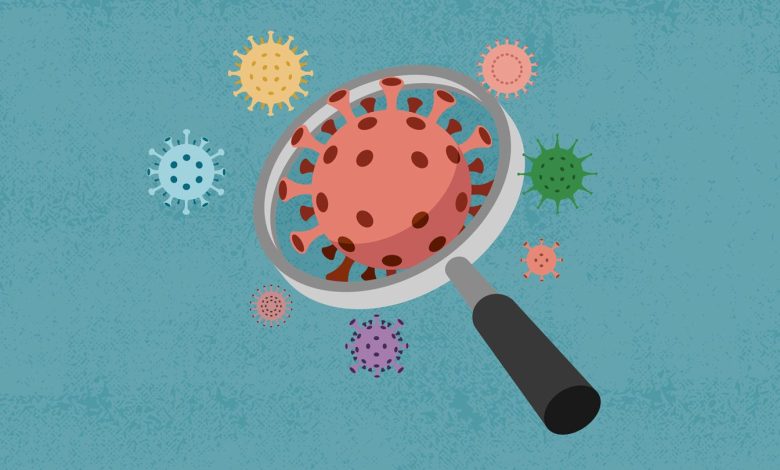Spread of COVID Variant BA.2.86 ‘Pirola’ Grows

[ad_1]
The COVID-19 variant Pirola, also known as BA.2.86, is being carefully monitored by public health officials as it spreads more rapidly throughout the United States.
At the end of last week, the Centers for Disease Control and Prevention (CDC) issued an update alerting the public that it was carefully monitoring the variant, which was first discovered this summer, to “better understand its potential impact on public health.”
Two weeks prior to the latest reporting, Pirola accounted for just 3 percent of all COVID-19 infections. Now, for the most current two-week tracking period, BA.2.86 has climbed to make up nearly 9 percent of all cases, per the CDC. Pirola is most prevalent in New York and New Jersey, where the strain accounts for just over 13 percent of COVID-19 infections.
The HV.1 variant holds the top spot, accounting for almost one-third of cases in the United States, and EG.5 comes in at No. 2, accounting for 13 percent of infections.
The World Health Organization (WHO) is viewing the mutation as a potential international threat as well. “BA.2.86 has been reported in multiple countries, and the prevalence has been slowly increasing globally,” stated the WHO in an executive summary from the end of November. The international health agency has now classified BA.2.86 as a “variant of interest.”
The latest sequencing, a process used to identify COVID-19 variants, has found the largest proportion of BA.2.86 cases in the following countries:
- United Kingdom, at nearly 20 percent of cases
- France, at nearly 12 percent
- Sweden, nearly 11 percent
Does the Latest COVID-19 Vaccine Protect Against the Pirola Variant?
While Pirola may be gaining steam in terms of spread, available data do not indicate that the mutation is causing more severe COVID-19 symptoms.
The CDC says BA.2.86 does not seem to be driving increases in infections or hospitalizations in the United States, and the health agency agrees with a WHO assessment suggesting that the public health risk posed by this variant is low compared with other circulating variants.
Although COVID-related hospitalizations have climbed by 8.3 percent over the most recent week of CDC tracking, that can be expected as respiratory infections generally rise in the winter months, according to Jesse Bloom, PhD, a professor at the Fred Hutchinson Cancer Center in Seattle, who studies virus evolution.
“I don’t think it is possible to know right now what any of this [increasing BA.2.86 cases] is likely to mean for overall disease burden or case counts,” he says.
The CDC also stresses that updated COVID-19 vaccines are expected to increase protection against BA.2.86, as they do for other variants.
Keeping an Eye on JN.1, a Descendant of Pirola
When Pirola was first identified back in the summer, it became a focus for public health officials because of its high number of spike amino acid mutations compared to previous strains.
Bloom suggests that an offshoot of BA.2.86 may become an even greater concern.
“BA.2.86 was remarkable for how many spike mutations it had,” says Dr. Bloom. “Now one of its direct children, called JN.1, which has an additional spike mutation, is spreading rapidly.” An additional spike mutation makes it easier to infect cells, he says. “There are also several other new variants in the BA.2.86 family. So it is possible, although still not certain, that they will spread to become the dominant SARS-CoV-2 variants.”
For now JN.1 is a minority variant, making up less than 1 percent of cases. But the CDC predicts that “BA.2.86 and its offshoots like JN.1 will continue to increase as a proportion of SARS-CoV-2 genomic sequences.”
No matter how COVID-19 continues to develop, the CDC continues to urge the public to take measures to protect themselves and limit the spread of the virus. This includes staying up to date with vaccinations, getting tested when needed, staying home if infected, and taking extra precautionary measures (such as masking in public) when hospitalization admission rates rise.
[ad_2]




